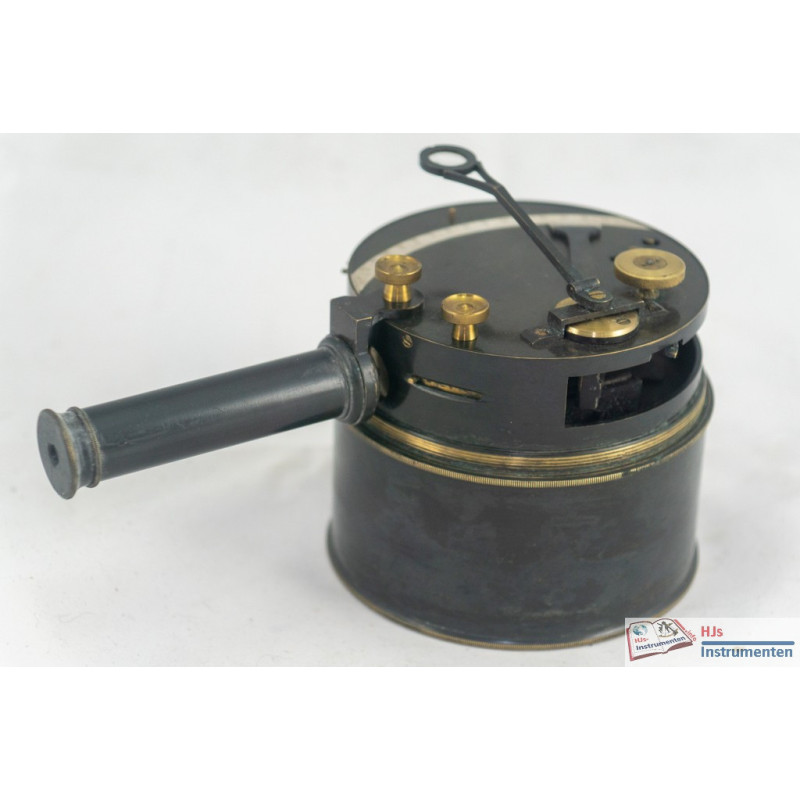









Adie, London large box sextant
At first this box sextant may look like so many other contemporaries. Until you look at the measurements. This box sextant is around 2 - 3 cm larger in diameter than others from the same era. This larger size has two advantages. First the scale is easier to read (with larger mirrors). However, it has the same graduation as the smaller ones and the size is not that much larger that it will have a greater precision.
The main advantage of this instrument is that it can actually measure angles from 0 to 180. For this it has two scales ánd two different peep holes. The regular scale runs up to 145 with a usable range of around 130 degrees. The regular scale can be used with the telescope. For measuring angles over 120 degrees, the secondary peep hole is used which measures from around 140 degrees to 180 degrees. The area between 130 and 140 is up for debate, the image in the mirror through both peepholes is just a thin sliver making it very hard to impossible to operate the instrument in that range.
The two filters which can be tilted out of the way can be used for both peephole, however for the regular peephole only the index mirror is covered whereas for the secondary (large) range both mirrors are covered. Considering that in practice the larger angles are only useful in land surveying this does not have to be a big issue.
Adie was in operation in London from 1848 - 1886, placing the sextant in the same time frame.
Data sheet